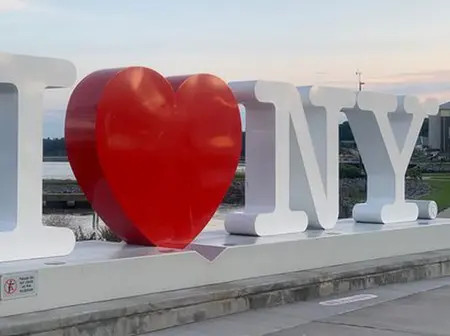When Nairobi Governor Johnson Sakaja rolled out ‘Let’s Make Nairobi Work’ he was responding to a familiar problem: a capital whose image and day-to-day functioning have been dented by hawking, matatu disorder, erratic garbage collection and visible breakdowns in public services.
Nairobi is far from unique, cities and countries around the world have faced reputational crises and responded with focused branding, policy or event-led campaigns that changed how they were seen and how they functioned.
Below are six case studies that made each campaign work:
In the mid-1970s, New York City was on the brink of financial collapse, grappling with high crime rates and a tarnished reputation.
To boost tourism, the state hired graphic designer Milton Glaser, who created the now-iconic ‘I ❤️ N’ logo.
What started as a simple tourism campaign became a global symbol of resilience and love for the city.
Its success was due to its simplicity and emotional resonance. It empowered residents to reclaim their city’s narrative and became a powerful tool for civic pride, especially in the wake of crises like 9/11.
The iconic ‘I ❤️ N’ logo has since been used world over while still retaing the same format.
Las Vegas’s campaign, ‘What Happens in Vegas, Stays in Vegas,’ launched in 2003, was a triumph of branding.
Instead of trying to change its reputation as a place of indulgence, the campaign leaned into it, promoting the city as a place of adult freedom and empowerment.
The slogan became a pop culture staple, referenced in movies and TV shows, and cemented Las Vegas’s image as a destination for uninhibited fun.
Following the 1994 genocide, Rwanda faced a profound crisis. The nation’s campaign focused not on tourism but on national unity and reconciliation.
The government’s messaging, which included radio broadcasts, school programs, and traditional tribunals, promoted the idea that Hutu and Tutsi were one people.
Rwanda also ran the high-profile ‘Visit Rwanda” campaign, which has been seen on global platforms such as football jerseys through partnerships with Arsenal and Paris Saint-Germain.
The initiative has helped reposition the country’s image from its tragic past to a modern, clean, and fast-growing African destination, boosting tourism and international perception.
The phrase ‘Habibi, come to Dubai’ has become a cultural phenomenon, functioning as an unofficial but highly effective marketing campaign for the city.
The phrase gained immense traction on social media platforms like TikTok and Instagram. Content creators often used it in videos showcasing Dubai’s luxurious lifestyle, from supercars to stunning skylines.
This user-generated content made the message feel authentic and aspirational, a stark contrast to traditional, corporate-driven campaigns.
The word ‘Habibi’ is an Arabic term of endearment meaning ‘my love.’ When paired with an invitation to Dubai, it creates a welcoming yet exclusive message.
In the 1980s, Glasgow launched the ‘Glasgow’s Miles Better’ campaign to reposition itself both as an attractive tourist destination and as a hub for business and industry.
The campaign used the slogan alongside the cheerful cartoon character Mr. Happy.
It is widely recognised as one of the first major city rebranding initiatives in the world and went on to win several national and international awards for its impact.
While these campaigns were successful, they did not rely on slogans alone. A lot of effort went into enforcement, infrastructure investment, community participation and long-term consistency.
The lesson for Nairobi is that a catchy tagline such as ‘Let’s Make Nairobi Work’ can only succeed if it is backed by visible, measurable improvements that residents and visitors can feel every day.
Without the hard work behind the words, any campaign risks becoming just another slogan.

Leave a Reply